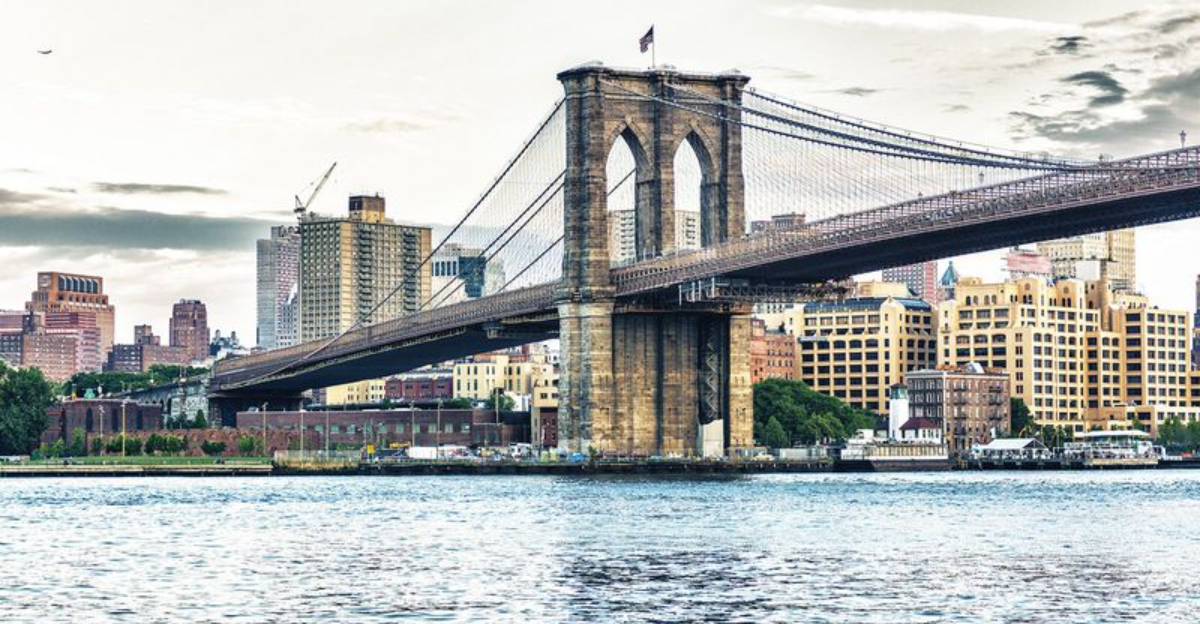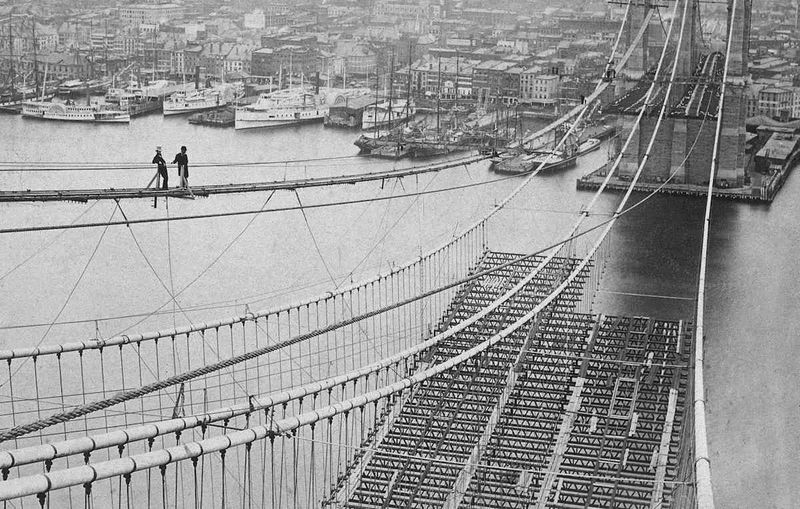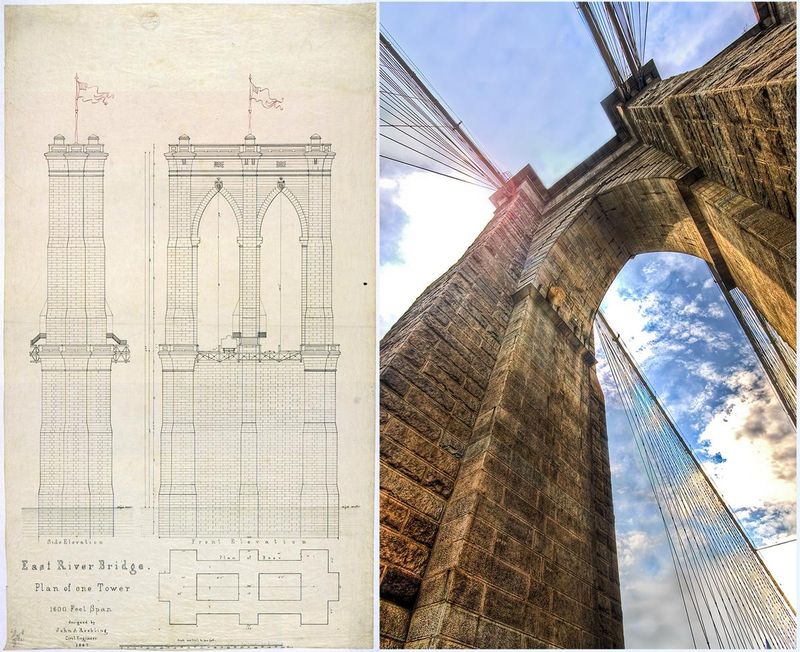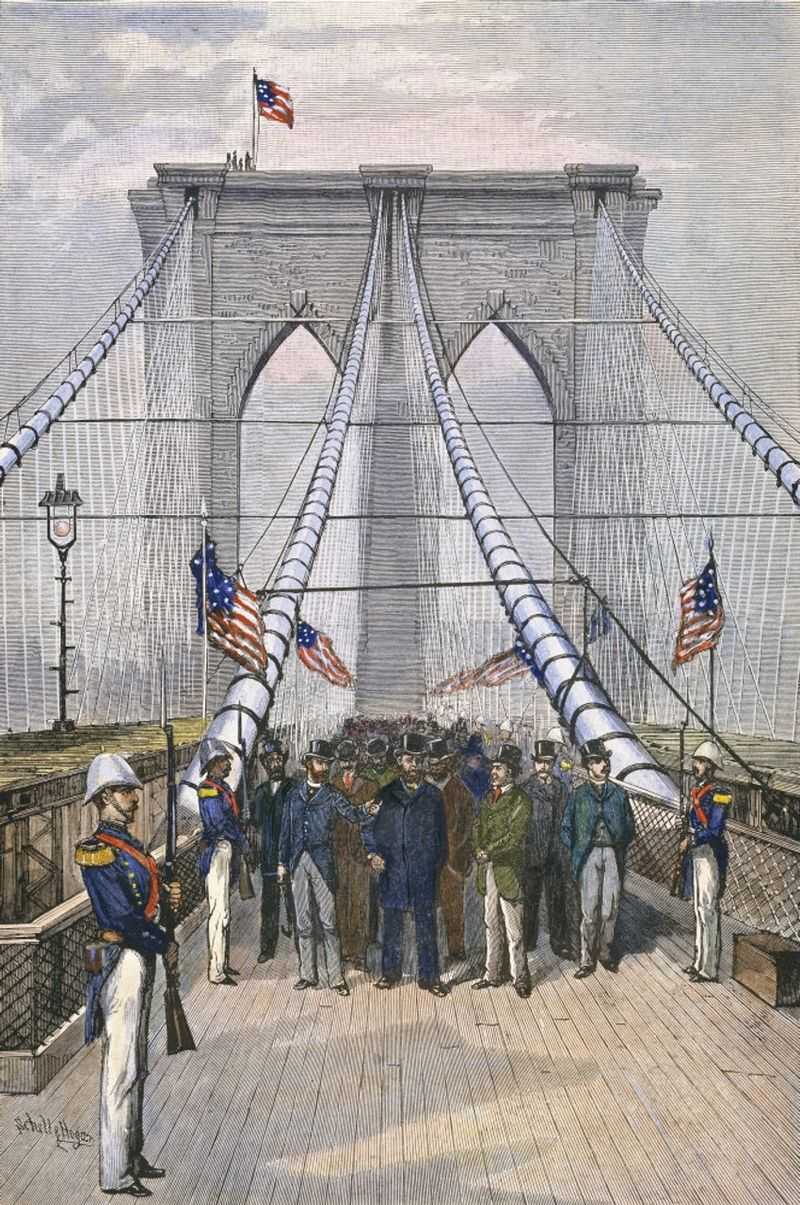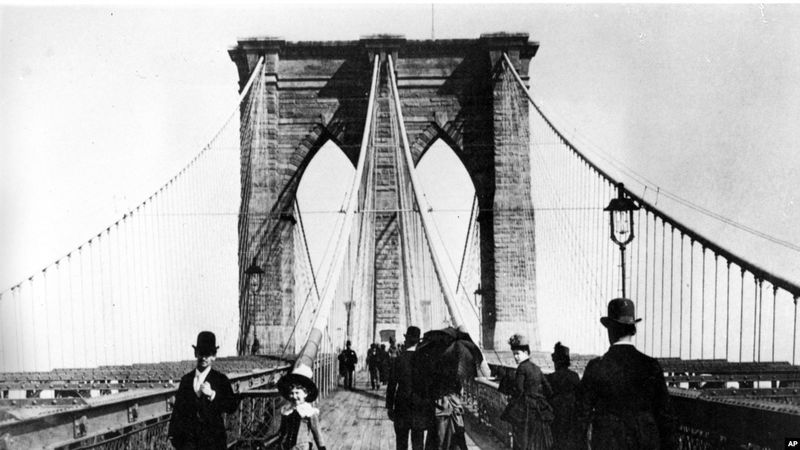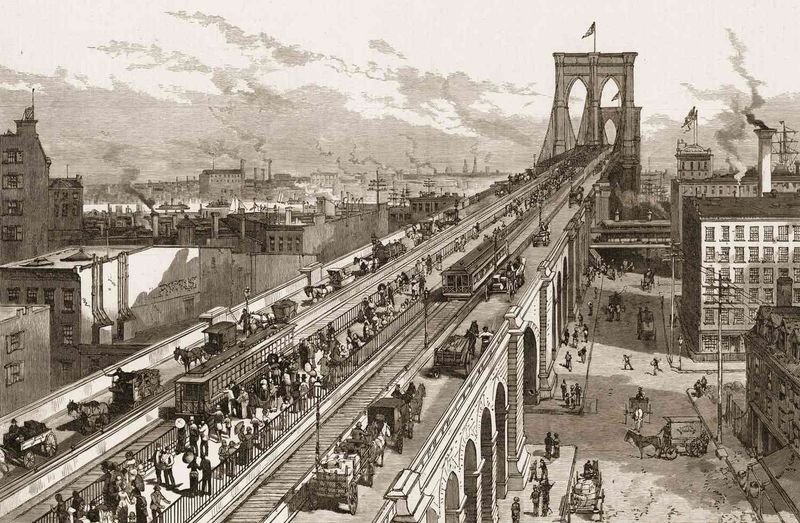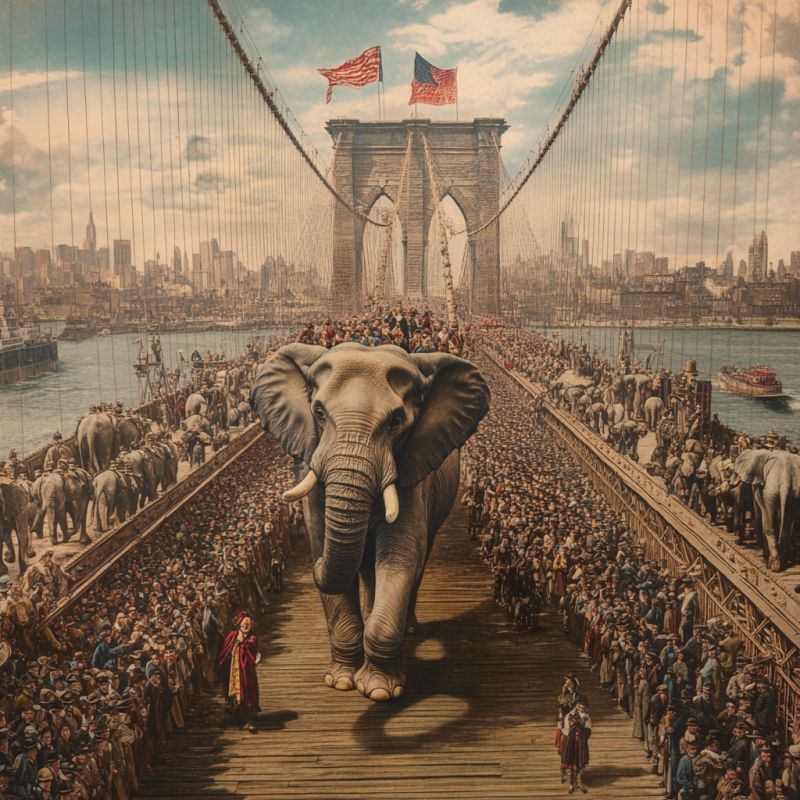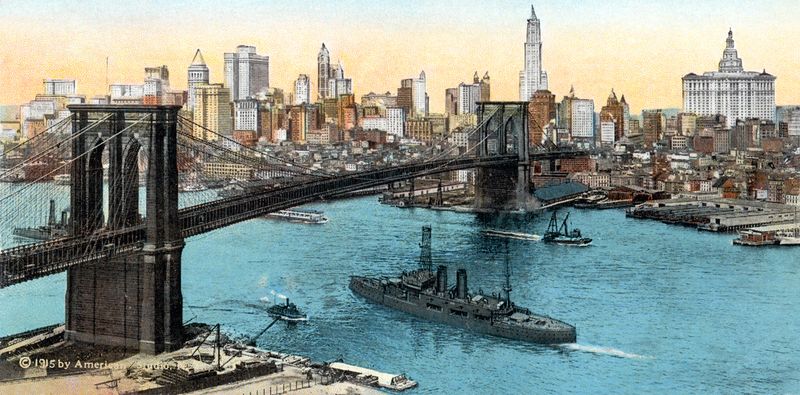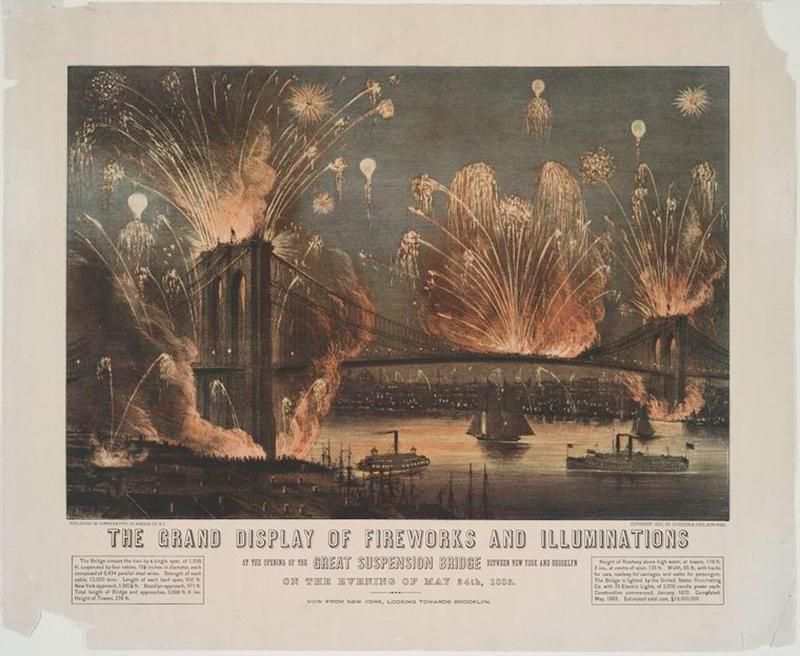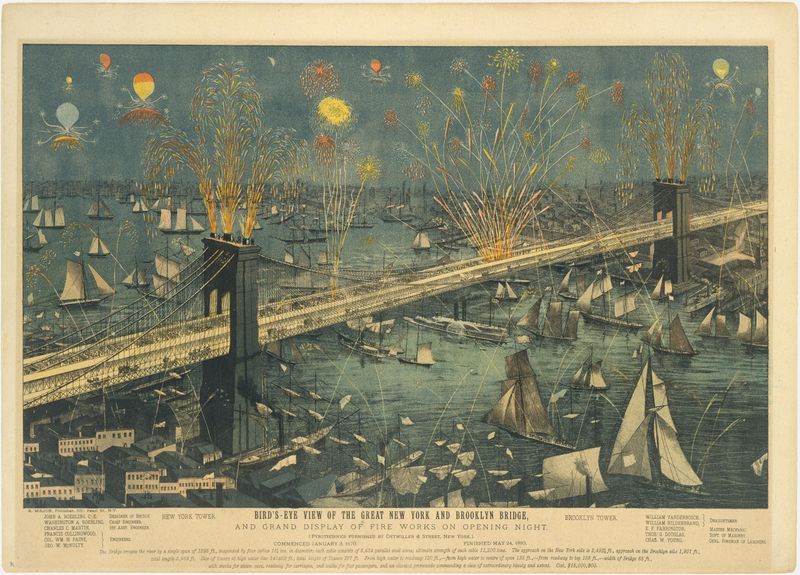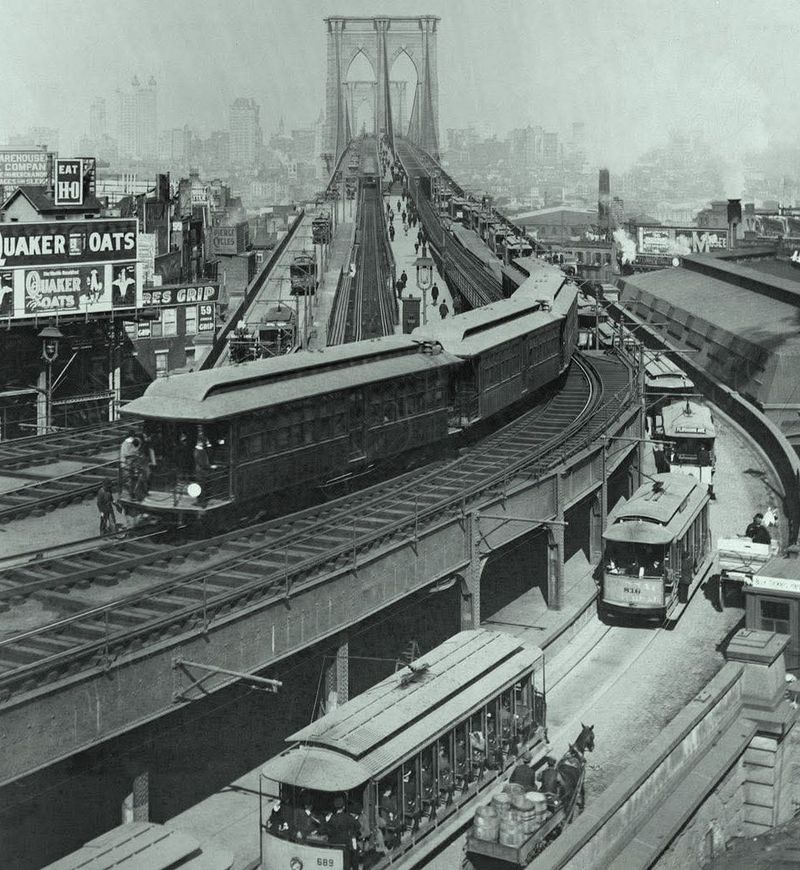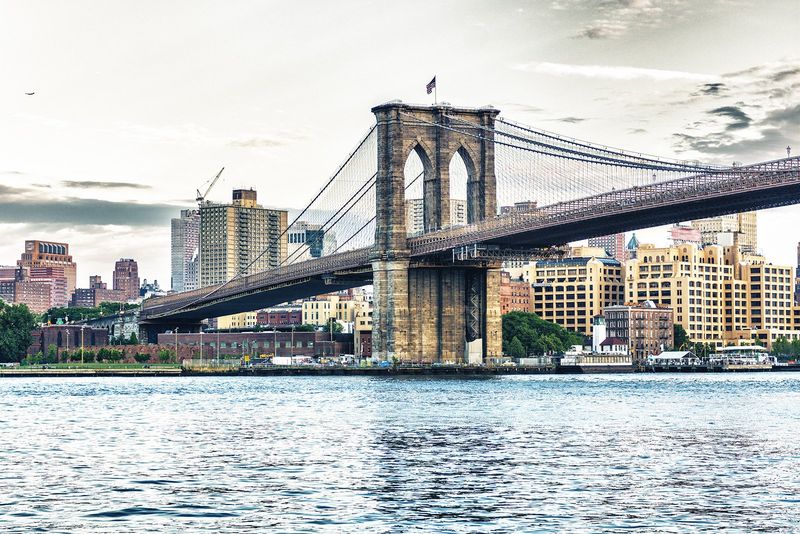The Brooklyn Bridge, a marvel of engineering and a symbol of innovation, has an intriguing history filled with stories of determination, tragedy, and triumph. As we delve into 12 fascinating facts about the bridge’s opening in 1883, you’ll discover the human spirit and ingenuity that shaped this iconic landmark.
From its groundbreaking construction to the lively celebration that marked its completion, the Brooklyn Bridge stands as a testament to resilience and vision.
This journey through history reveals how a remarkable feat of engineering became a beloved emblem of connection and progress.
1. It Took 14 Years to Complete
The Brooklyn Bridge took a staggering 14 years to complete, breaking ground in 1869 and finally opening in 1883. As the first steel-wire suspension bridge ever constructed, it stood as an engineering triumph. The project faced numerous challenges, including financial difficulties and technical obstacles, but the vision of a bridge connecting Brooklyn and Manhattan fueled its completion. Each steel wire and towering stone pillar reflected the hard work and dedication of those involved. The bridge’s completion marked a new era in architectural innovation, forever changing the skyline and serving as a lasting symbol of human perseverance.
2. It Was a Family Legacy
The Brooklyn Bridge’s creation was truly a family affair. Initially designed by John A. Roebling, the project took a dramatic turn when he passed away, leaving his son, Washington Roebling, to take over. Sadly, Washington fell ill, succumbing to caisson disease, leaving much of the bridge’s oversight to his wife, Emily Roebling. Emily became an unsung hero, learning complex engineering concepts to communicate with the engineers. Her dedication ensured the project’s completion, cementing the Roebling family legacy in architectural history. The bridge stands today as a testament to their resilience and unwavering commitment.
3. The Opening Day Was a Massive Celebration
The opening of the Brooklyn Bridge was nothing short of a spectacular affair. On May 24, 1883, over 150,000 people jubilantly crossed the bridge, marking a significant milestone in New York’s history. The air was filled with excitement as cannons roared and flags fluttered, while President Chester A. Arthur and New York Mayor Franklin Edson ceremoniously cut the ribbon. This grand celebration symbolized more than just an engineering feat—it was a moment of unity and pride for a burgeoning metropolis. The joyous atmosphere marked the beginning of the bridge’s enduring legacy and cultural significance.
4. Emily Roebling Was the First Person to Cross the Bridge
Emily Roebling’s name became etched in history as she led the first crossing of the Brooklyn Bridge. With a symbolic rooster in her lap—an emblem of victory—she set out across the span, solidifying her integral role in the bridge’s completion. Despite societal norms of the era, Emily’s determination and intelligence broke barriers, making her a pioneer for women in engineering. Her courageous crossing was not only a personal triumph but also a beacon of progress, reflecting her significant contributions to the project. Emily’s journey across the bridge stands as an enduring symbol of her remarkable legacy.
5. It Was the Longest Suspension Bridge at the Time
In 1883, the Brooklyn Bridge held the record as the longest suspension bridge in the world, stretching an impressive 1,595 feet over the East River. This extraordinary feat of engineering mesmerized the world and set a new standard for bridge construction. The bridge’s majestic towers and sweeping cables served as a bold proclamation of technological progress and human ingenuity. Crowds marveled at its grandeur, and it quickly became a symbol of Brooklyn and Manhattan’s interconnectedness. The bridge’s impressive span heralded a new era of possibilities, reshaping urban landscapes and inspiring future innovations in bridge design.
6. Tragedy Struck During Construction
The construction of the Brooklyn Bridge was marred by tragedy, with over 20 workers losing their lives. John A. Roebling, the original designer, was among those who perished, succumbing to injuries sustained on site. Additionally, many workers fell victim to caisson disease, a condition caused by decompression sickness—a risk unknown at the time. These sacrifices underscored the human cost of progress, casting a shadow over the monumental achievement. Despite these challenges, the bridge was completed, serving as a powerful reminder of resilience and the price often paid for pioneering advancements.
7. The Public Was Terrified It Would Collapse
Shortly after its opening, the Brooklyn Bridge faced rumors of instability, leading to a panic-stricken stampede that resulted in 12 tragic deaths. The public’s fear of the bridge collapsing lingered until circus legend P.T. Barnum restored confidence in a most unusual way. He marched 21 elephants across the bridge, demonstrating its strength and safety. This bold spectacle captivated the public and quelled fears, transforming skepticism into awe. The parade of elephants became a legendary anecdote, further securing the bridge’s place in history as a marvel of engineering and a symbol of enduring strength.
8. It United Two Cities
At the time of its construction, the Brooklyn Bridge was more than just a physical span; it was a symbolic link between the cities of Brooklyn and Manhattan. Prior to the bridge’s completion, these cities were separate entities, each with its own unique identity. The bridge facilitated the flow of people and commerce, knitting the communities closer together and laying the groundwork for the eventual consolidation of the boroughs into New York City in 1898. This union reflected the dynamic growth and shared aspirations of the two cities, making the bridge a lasting emblem of unity and progress.
9. The Opening Was a Media Sensation
The opening of the Brooklyn Bridge captured the imagination of people worldwide, earning it the moniker of “the eighth wonder of the world.” Newspapers of the day celebrated this engineering marvel, with headlines praising its scale and sophistication. The bridge became an instant icon, embodying the spirit of American ambition and ingenuity. Its soaring towers and intricate design were not only feats of engineering but also symbols of a nation’s progress and potential. The media frenzy surrounding its opening solidified its status as a global landmark, a testament to visionary thinking and technological prowess.
10. Fireworks Lit Up the Night Sky
The evening of the Brooklyn Bridge’s opening was marked by a breathtaking fireworks display that lit up the night sky. Thousands of onlookers gathered to witness the spectacle, their faces aglow with excitement and wonder. Brass bands played jubilantly, adding to the festive atmosphere as vibrant bursts of color cascaded over the bridge. This captivating celebration turned the bridge into a beacon of joy and civic pride, capturing the hearts of those present. The dazzling display not only marked the bridge’s inauguration but also celebrated the spirit of innovation and community that it represented.
11. It Had a Trolley and a Pedestrian Path
From its inception, the Brooklyn Bridge was designed to accommodate diverse modes of transportation. It featured a trolley line, horse-drawn carriages, and a pedestrian path, anticipating the varied needs of city commuters. This foresight in planning allowed the bridge to serve as a vital artery for movement and commerce, accommodating thousands daily. The bustling thoroughfare soon became a vibrant scene of urban life, reflecting the dynamic energy of New York City. The bridge’s multi-use design showcased its adaptability and foresight, ensuring its relevance and functionality for generations to come.
12. It’s Still a Beloved Icon Today
Nearly 140 years after its opening, the Brooklyn Bridge remains a cherished symbol of New York City. Its elegant design and storied past continue to captivate both locals and tourists alike. The bridge’s presence in countless films, photographs, and artworks has solidified its status as a cultural icon. Today, it stands not only as a vital transportation link but also as a testament to the spirit of innovation, resilience, and pride that defines New York. Its enduring allure reminds us of the timeless beauty and historical significance that bridges can represent, connecting places and people.
